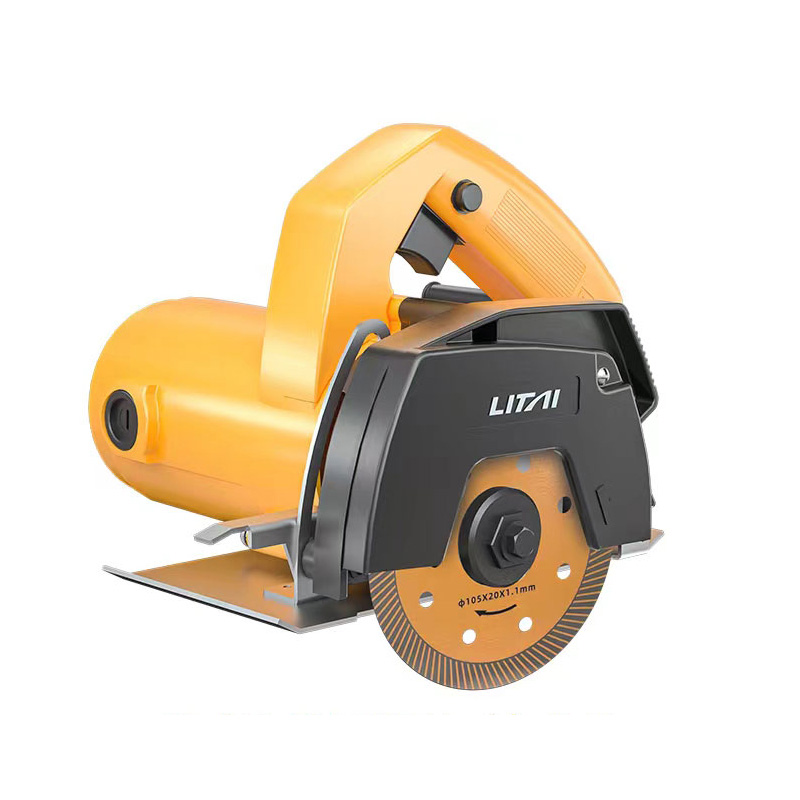How Do Cutting Machines Revolutionize the Manufacturing Process?
2024-12-17
In the world of modern manufacturing, precision and efficiency are key. Whether you're producing textiles, metals, plastics, or even food products, the need for reliable and accurate cutting is universal. This is where cutting machines come into play, playing a pivotal role in improving productivity, reducing waste, and ensuring high-quality results. But how exactly do cutting machines revolutionize the manufacturing process, and what makes them so indispensable across a wide range of industries?
In this blog, we'll take a closer look at the different types of cutting machines, their applications, and how they contribute to transforming industries by enhancing speed, accuracy, and cost-effectiveness.
What Are Cutting Machines?
Cutting machines are specialized industrial tools used to cut materials into precise shapes, sizes, or dimensions. These machines can be employed in a variety of manufacturing processes, including shearing, slicing, chopping, or even laser cutting. They are designed to handle a wide range of materials such as metals, plastics, wood, textiles, and more, depending on the specific type of machine.
Cutting machines can be manual, semi-automatic, or fully automatic, and they are often integrated into production lines to streamline the manufacturing process. Depending on the application, they might use blades, lasers, water jets, or even high-pressure techniques to achieve the desired results.
How Do Cutting Machines Improve Manufacturing?
#1. Enhanced Precision and Accuracy
One of the key advantages of cutting machines is their ability to make highly precise cuts. Traditional manual cutting methods can lead to inconsistencies and human error, which can affect the quality of the final product. In contrast, cutting machines are engineered for high accuracy, ensuring that each cut is made according to the exact specifications, whether it's for intricate designs or large-scale mass production.
For industries like electronics, automotive, and aerospace, where precision is paramount, cutting machines offer a significant advantage by reducing the chances of defects and material waste.
#2. Increased Production Speed
Speed is a crucial factor in any manufacturing process, and cutting machines are designed to operate at high speeds without sacrificing quality. Automated cutting machines, in particular, can work continuously, reducing downtime and speeding up production times. This is especially beneficial for industries that require large volumes of material to be cut quickly, such as the textile, paper, and packaging industries.
In high-volume production environments, faster cutting leads to increased output, allowing businesses to meet deadlines and fulfill large orders more efficiently.
#3. Material Waste Reduction
Cutting machines are designed to maximize material usage by reducing waste during the cutting process. In traditional manual cutting methods, operators may have to make multiple cuts to achieve the correct shape, which can lead to unnecessary material loss. However, modern cutting machines use precise measurements and automated controls to ensure that the material is cut in the most efficient way possible.
Additionally, many cutting machines are equipped with advanced software that optimizes the cutting pattern, ensuring that the material is used to its fullest potential. This is particularly important for industries working with high-cost materials like metals, textiles, and composites.
#4. Versatility in Material Types
Another major advantage of cutting machines is their versatility. They can handle a wide range of materials, from soft textiles to hard metals and even fragile materials like glass or ceramics. This flexibility makes cutting machines indispensable for industries such as automotive manufacturing, construction, textiles, food processing, and packaging.
For example, laser cutting machines are capable of cutting through metals, plastics, and wood with high precision, while water jet cutting machines can handle materials like stone and glass that would be difficult to cut using traditional methods. This ability to work with various materials makes cutting machines a one-stop solution for many manufacturers.
#5. Improved Safety
Safety is always a concern in any industrial setting, especially when working with sharp tools or heavy machinery. Cutting machines are designed with safety features that help minimize the risk of accidents. Many cutting machines are equipped with automatic shut-off mechanisms, protective guards, and safety sensors to protect operators.
Moreover, automated and CNC (Computer Numerical Control) cutting machines reduce human interaction with the cutting process, further enhancing safety by eliminating the need for workers to be directly involved with potentially hazardous operations.
#6. Cost Efficiency
While the initial investment in cutting machines can be significant, they ultimately contribute to long-term cost savings. By improving precision, reducing material waste, and increasing production speeds, cutting machines help manufacturers lower production costs. Furthermore, automated cutting machines can reduce labor costs by minimizing the need for manual labor, leading to higher profitability over time.
For businesses looking to stay competitive, especially in industries with tight margins, cutting machines are a crucial investment for improving efficiency and reducing costs in the long run.
Types of Cutting Machines
There are various types of cutting machines, each suited for specific applications and materials. Here are some of the most commonly used cutting machines:
#1. Laser Cutting Machines
Laser cutting uses a high-powered laser beam to cut through materials with extreme precision. It’s commonly used for cutting metals, plastics, and thin materials. Laser cutting machines are known for their ability to make intricate cuts with smooth edges and minimal material distortion.
#2. Water Jet Cutting Machines
Water jet cutting uses high-pressure water, often mixed with an abrasive material, to cut through a wide variety of materials. It is ideal for cutting materials that are sensitive to heat, such as plastics, glass, and composites. Water jet cutting also produces a smooth finish with minimal burrs, making it perfect for delicate operations.
#3. CNC Cutting Machines
CNC cutting machines are controlled by a computer program, which allows for highly precise cuts. These machines can perform various types of cutting, including plasma, laser, and water jet cutting. CNC machines are widely used in industries such as aerospace, automotive, and manufacturing, where precision and repeatability are essential.
#4. Rotary Cutting Machines
Rotary cutting machines use a rotating blade to slice through materials. These machines are commonly used for cutting textiles, rubber, and plastic films. Rotary cutters provide clean, precise cuts, and they are often used in the production of clothing, packaging materials, and other flexible goods.
#5. Shearing Machines
Shearing machines are designed to cut through sheet metal, steel, and other materials by applying a shearing force. These machines are ideal for cutting large sheets into smaller sections or shapes and are commonly used in the metalworking industry.
Conclusion
Cutting machines have become an indispensable part of modern manufacturing, offering numerous benefits in terms of speed, precision, material utilization, and safety. Whether you’re cutting metals, textiles, plastics, or other materials, the right cutting machine can make all the difference in your production process. By incorporating cutting machines into your operations, you can improve efficiency, reduce costs, and ensure that your products meet the highest standards of quality.
As technology continues to evolve, we can expect even more advanced cutting solutions that will further enhance manufacturing capabilities, making these machines even more integral to industries across the globe.



